Max for Live
After many years (2014 - 2019) of slowly improving at Max patching, building generative music systems, and learning about audio synthesis, Michael sells a variety of open-ended generative music tools.
Devices
resynesthiz

resynesthiz is a Max for Live Instrument device for converting images into sound, with the ability to mangle the sound beyond recognition with its source image through additive synthesis. Images loaded into the device can be scanned (non)linearly through a function editor or manually with a MIDI-mappable slider.
blur
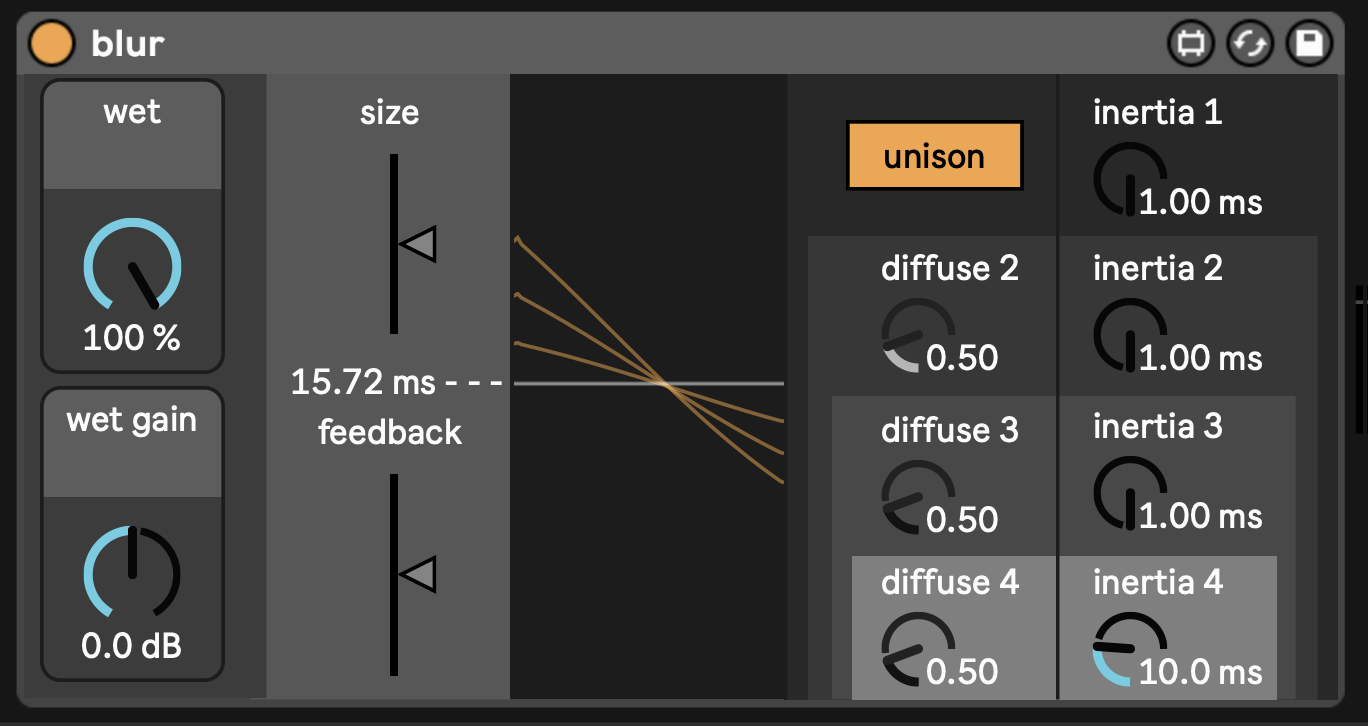
blur is a Max for Live stereo stereo audio effect device based on the iterative application of a 2-dimensional blur algorithm on an audio signal in the time domain, creating a cross between a low-pass filter, a multi-tap delay, a tonal reverb, and a complex feedback generator. Through its 72 delay lines, blur de-emphasizes subtlety in favor of smearing around undercurrents lurking in the audio signal.
greyMIDI
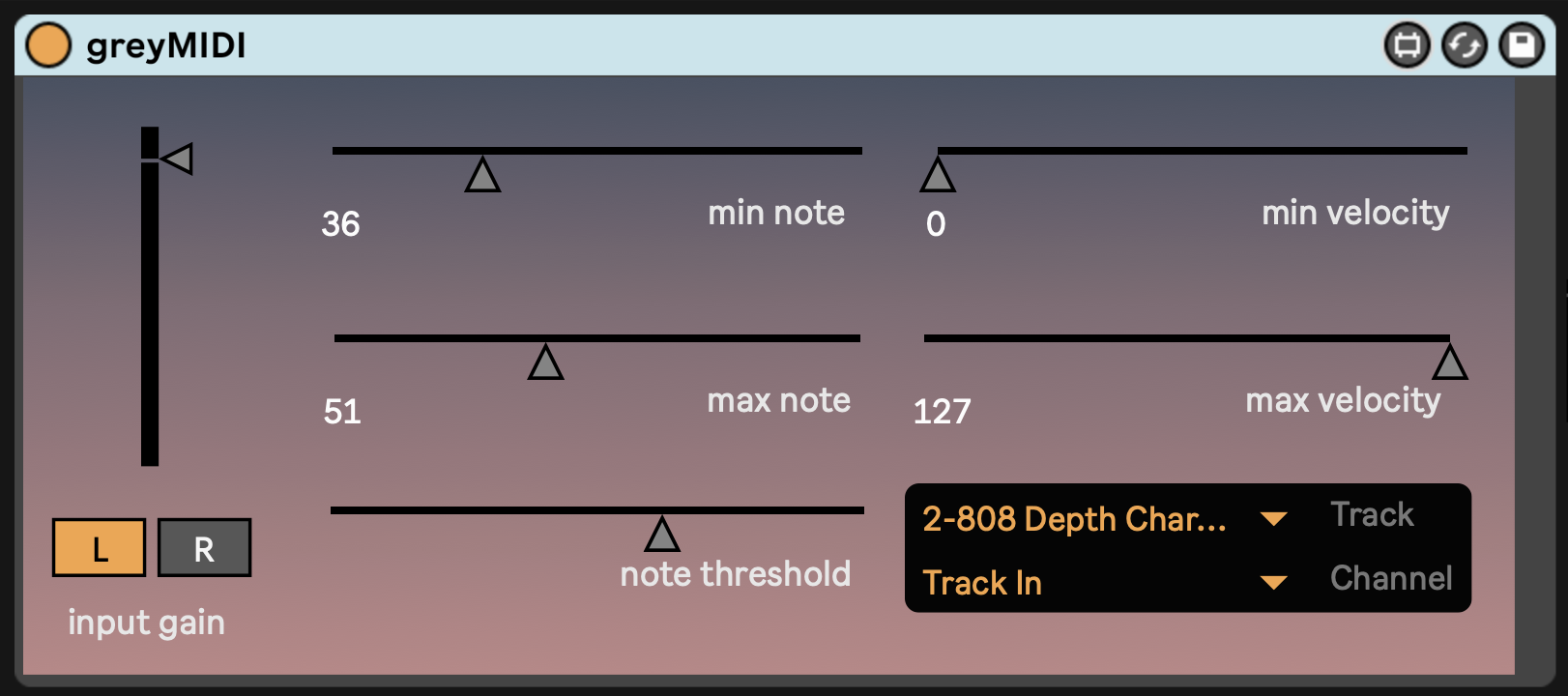
greyMIDI is a real-time audio-to-MIDI device that analyzes an incoming audio stream and produces a corresponding stream of MIDI notes. You can select the MIDI destination, dial in the sensitivity of the algorithm, and control the frequency range and dynamic range of note output.
_irage

_irage exposes 50 delay lines on both stereo channels connected in an infinite ring. It can produce stereo reverb, comb delays, flanges, multitap or discrete echoes, infinite feedback, partial or tuned overtones, resonations, distortions, noise washes, and chaotic sound modulations in different configurations. The controls for shifting, drifting, diffusing, and converging the delay lines allow you to automatically change the matrix of delays in real time and move through impossible spaces at impossible speeds, with delay lines updatable up to every 1 ms.
magic eye

magic eye is an audio effect device for video-controlled granular synthesis. The brightness of the selected pixel in the 256x256 viewfinder controls where the next audio grain comes from: darker pixels create grains from earlier in the source audio file, and brighter pixels create grains from later. As an audiovisual device, magic eye creates a tacit feedback loop between the user, the video, and the sound. The image reveals pathways for sonic improvisation which can be paused, reversed, and modulated in myriad ways.
shhh
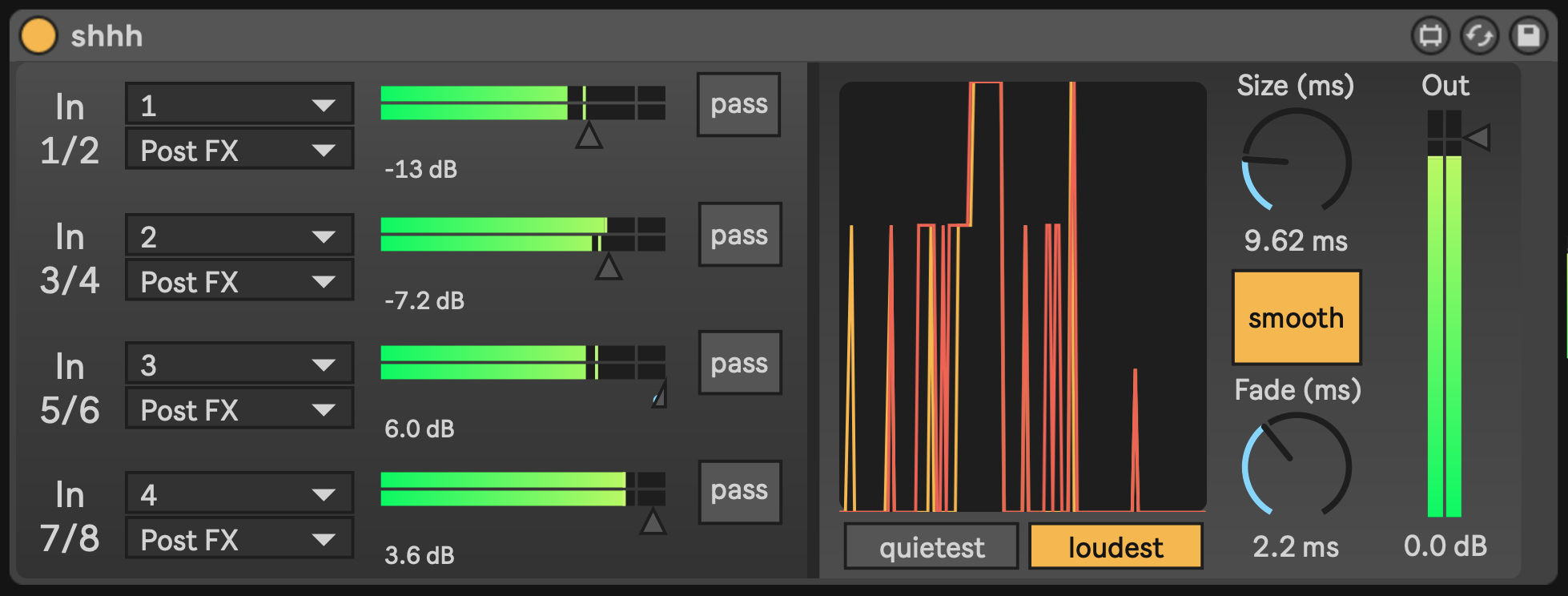
shhh plays back the quietest or loudest slice out of 4 stereo input sources, independently in the left and right channels, with a variable slice time for computing loudness. shhh specializes in the real-time synthesis of otherworldly crackles, cuts and clicks, and musique concrète passages. Through its performance controls, the user can explore the chaotic, fluid boundary between their sound sources and a deterministic slice selection algorithm.
Bloom

Bloom is a reverse reverb plugin for VST and AU formats, inspired by presets 41-49 on the Alesis Midiverb ii, a legendary multi-FX hardware unit originally released in 1987. Bloom continually plays back a reversed copy of the audio that just happened 250ms - 750ms ago. You can control the reverse time and reverb response of the effect, making it tailorable to a variety of use-cases, from the subtle to the extreme.
FEFefeee
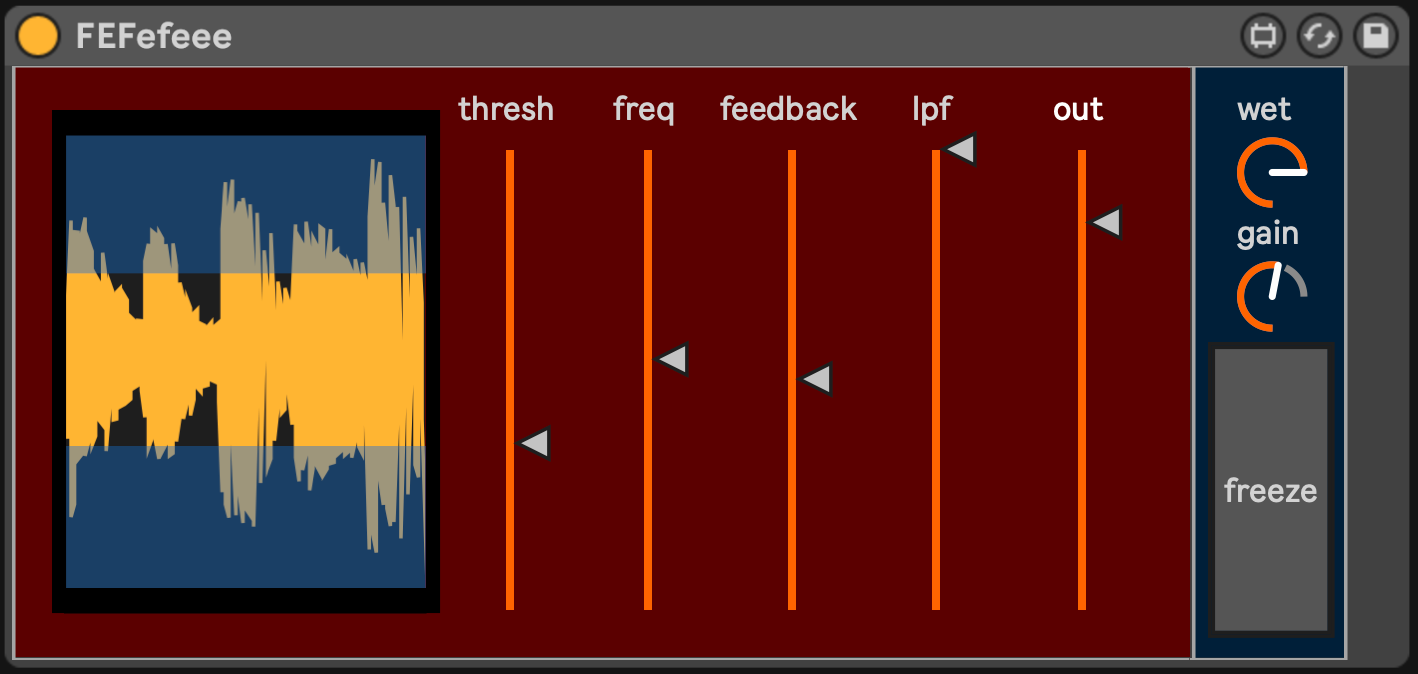
FEFefeee is a versatile Max for Live audio effect device that excites a micro-delayed feedback network whenever the audio input signal surpasses a user-defined threshold. The feedback loop can also be frozen and manipulated in real time, allowing for a wide range of experimental possibilities with the incoming audio. It works with any audio signal, including LFOs and impulse responses.
Drummatrix

Drummatrix is a 16-voice drum sequencer Max for Live device with linear and nonlinear sequencing modes. Each voice is available on 2 separate mixes: mix1 and mix2, which are controlled by 2 separate sequences: sequence1 and sequence2. Each of the 16 drum voices can play a one-shot sample (.wav or .aif) or real-time input with an ADSR envelope. In nonlinear playback mode, you can move through the sequence data at audio rates, making it possible to create drum sequences with LFOs and other audio. You can click individual cells in the matrix to create patterns, or randomize cells with various buttons and key commands. Patterns can be stored, modulated, rotated, mutated between, and more via the jam controls. The matrix data is 3-dimensional, with five possible states (z-values) for each cell: z0 (off), z1, z2, z3, and z4. Each of those values corresponds to a configurable playback speed on the assigned one-shot sample, or an equivalent pitch-bend on the real-time input. Each voice's mute, solo, mix, pitch, prob, 1/n, and realtime multisliders can drift around via a Markov chain process. You can control how much to modulate each voice, and how frequently to regenerate states.
Seek
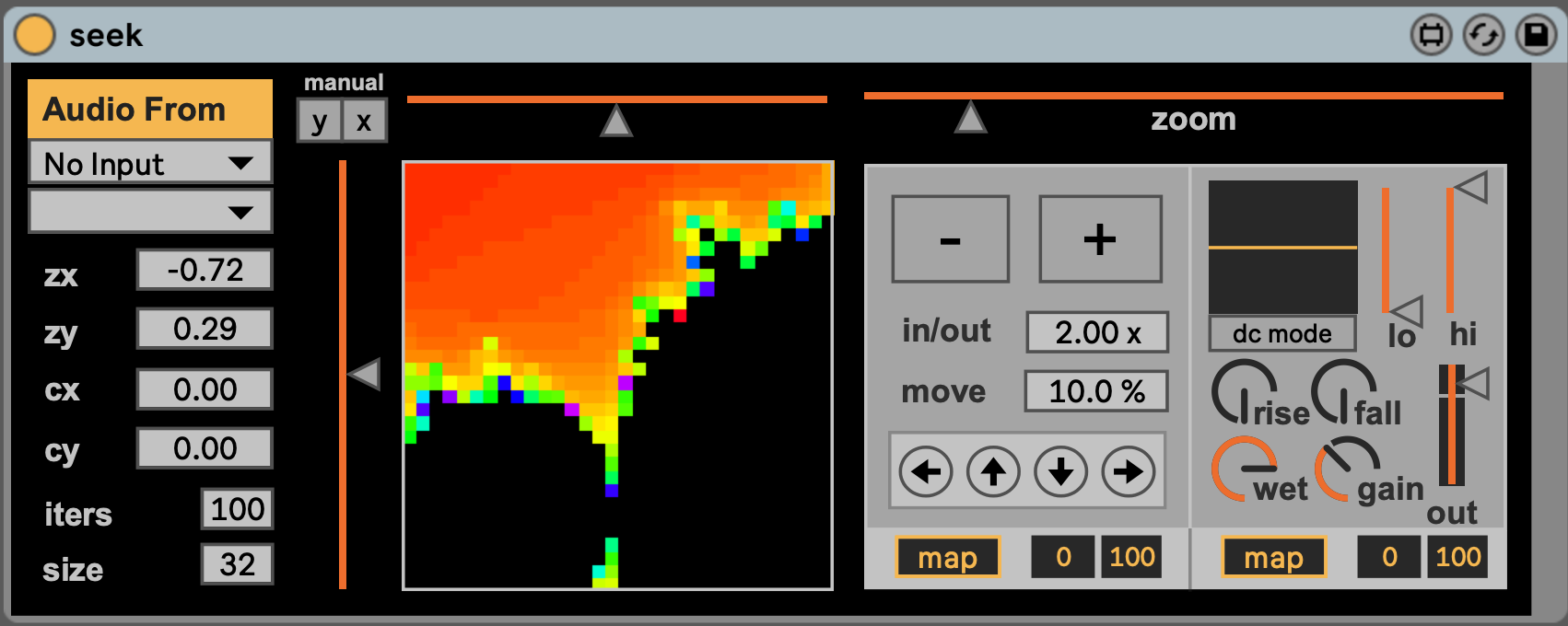
Seek is a fractal explorer and signal modulator that can work with audio, MIDI, and/or CV signals. The stereo input signal is modulated by its corresponding position in the window of the fractal that you're currently viewing. You can explore a wide range of modulation possibilities on the input signal by moving around the fractal. In DC mode, you can use sliders to manually explore the fractal, mapping signals anywhere else in Live as a parameter, or to a modular synthesizer as CV.